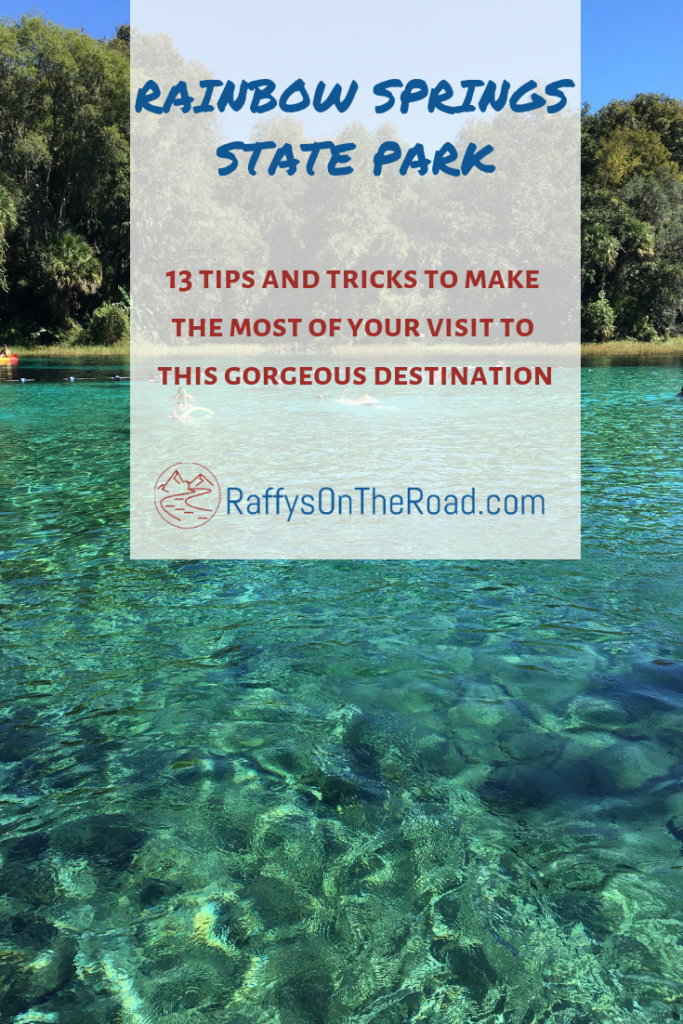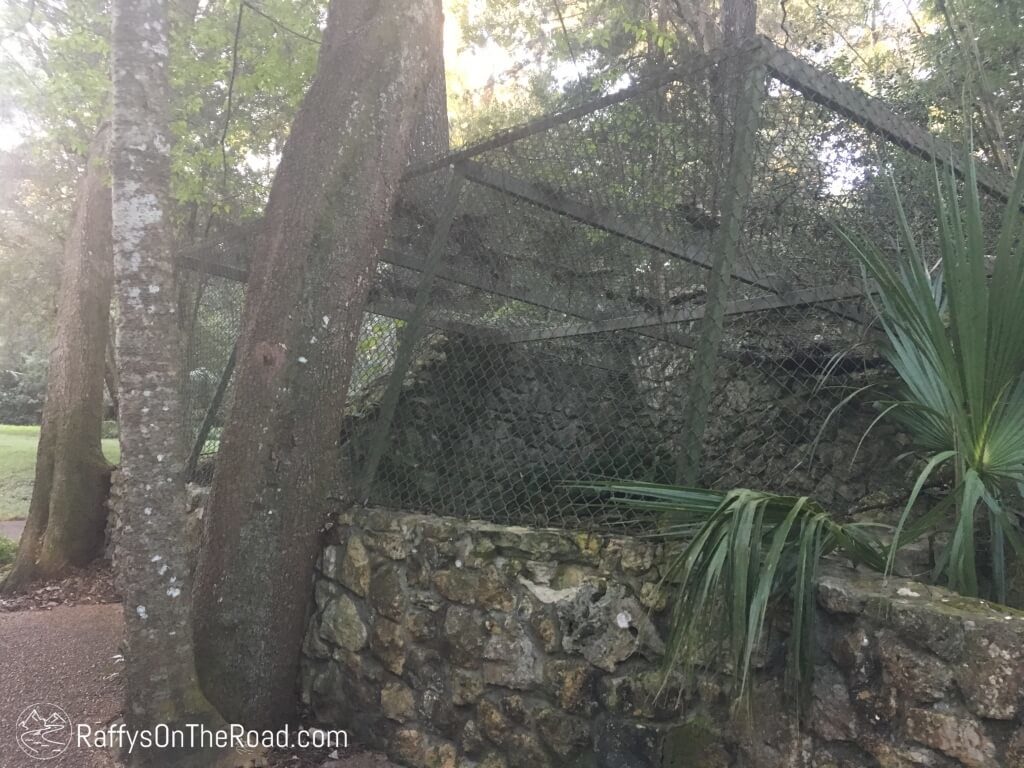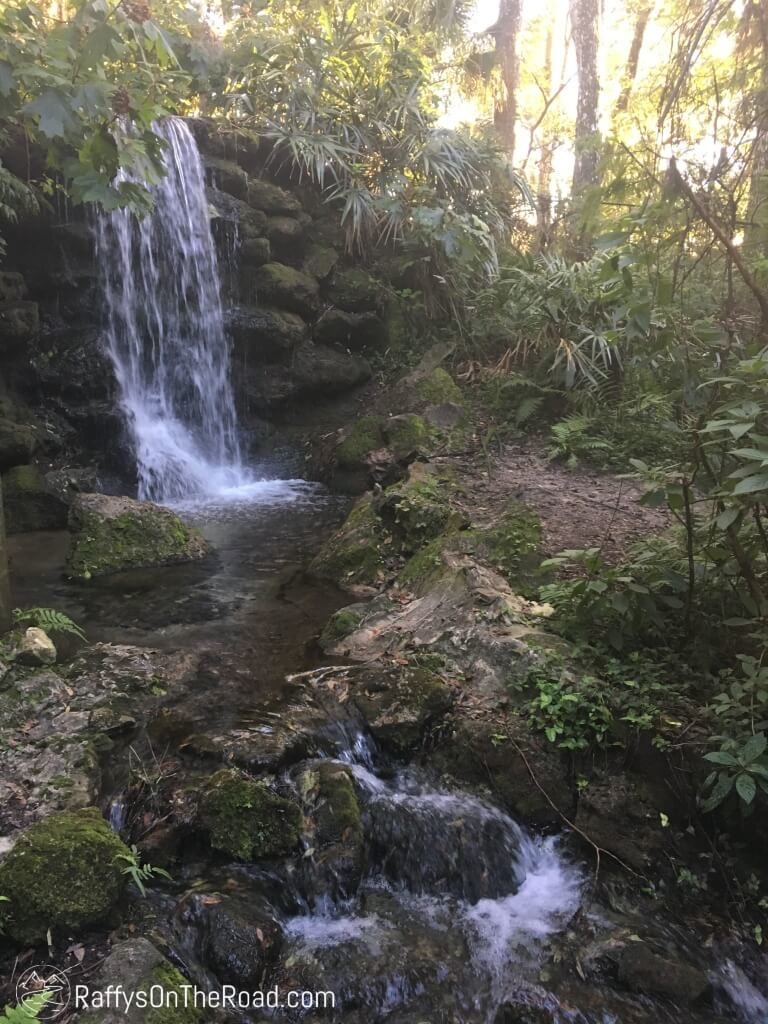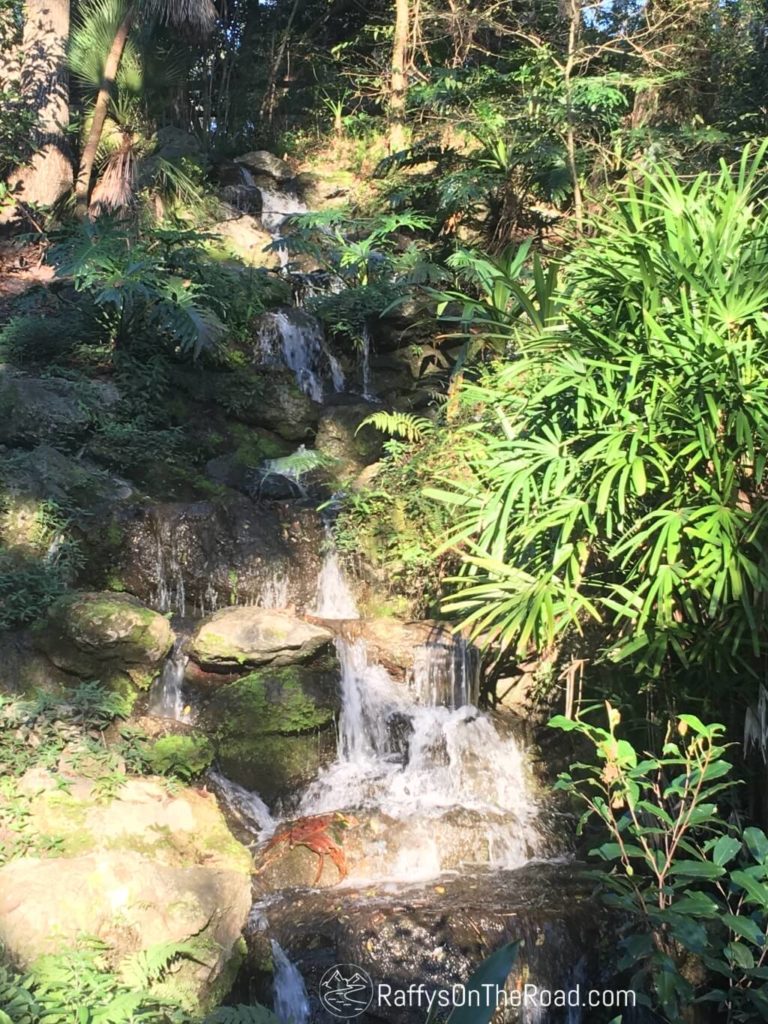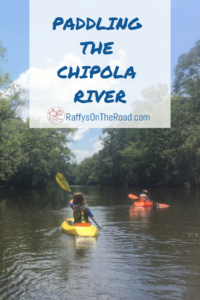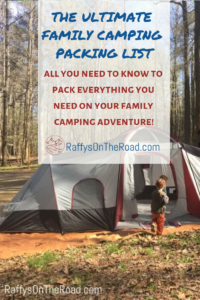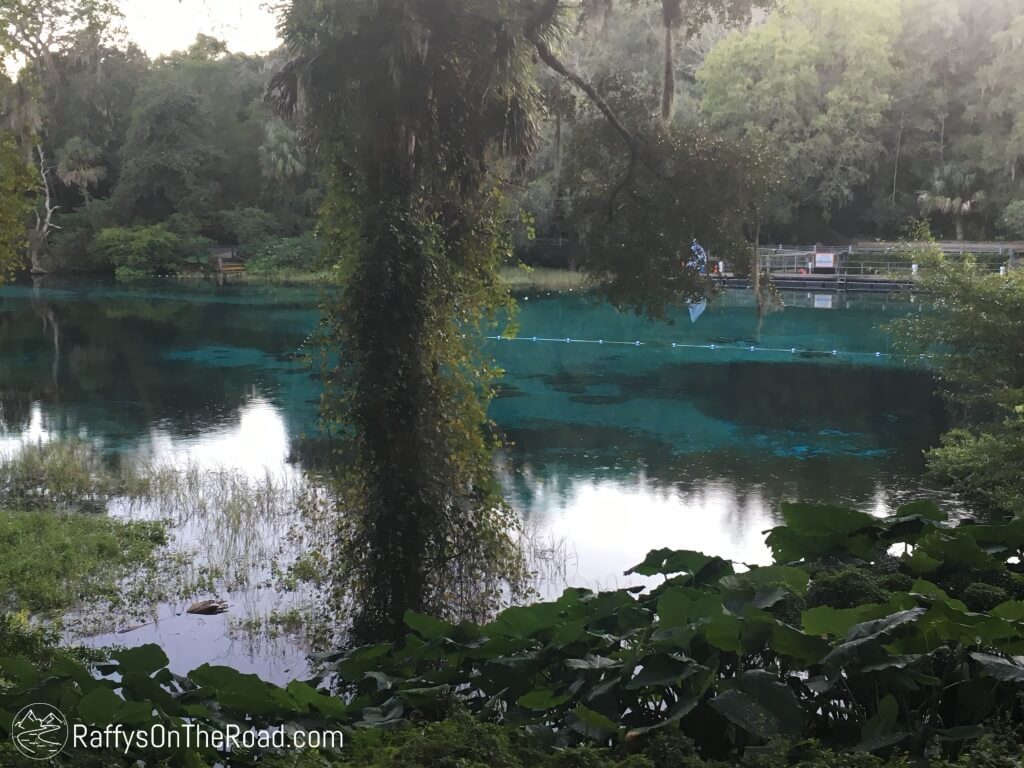
We recently had the good fortune (even if it was hurricane-induced) to camp at Rainbow Springs State Park for a few days! You can read all about our adventures (including tubing near an alligator) on that trip here. After spending a few days at Rainbow Springs we realized there is SO MUCH information that really needs to be shared to help others make the most of their trip!
So here you go – if you’re heading Rainbow Springs State Park you’re sure to have an adventure and these 13 tips will ensure you get the most out of your experience!
First, a quick info session on Rainbow Springs to get you oriented. Rainbow Springs State Park is located in Dunnellon, Florida, in southwest Marion County. Only 20 miles southwest of Ocala and 100 miles northwest of Orlando, the State Park comprises 1,459 acres, including Rainbow Springs, the first-magnitude headspring for the Rainbow River. Rather than one large bubbling spring, the headspring basin consists of several vents producing between 400 and 600 gallons of water per day. This crystal clear water forms the Rainbow River which flows 5.7 miles downstream until it merges with the Withlacoochee River.
1. Rainbow Springs History
While most of the time state park histories are pretty dull, Rainbow Springs is one of the exceptions. While the park is known today for its gorgeous water and water recreation, no discussion of Rainbow Spring would be complete without at least a brief history of this fascinating park.
Although there is evidence that people have inhabited the area around Rainbow Springs for at least 10,000 years, Rainbow Springs and the Rainbow River became popular in the 1880s when phosphate was discovered in the area. When the phosphate mining boom slowed down, the springs and river were renamed “Rainbow” to appeal to tourists.
Long before Walt Disney World in Orlando, Rainbow Springs area was opened as a privately owned theme park in the 1930s. During that time the owners developed the sea walls, lodge, gift shop, and a reptile exhibit. The iconic waterfalls, built on top of phosphate tailings, were also built during this period. A fun fact – the waterfalls are created using recirculated water from the river!
Rainbow Springs hit its heyday as a tourist attraction in the 1960s with the addition of glass-bottomed boat rides, riverboat rides, log raft rides, a cafe, an aviary, and submarine boat tours (which included stairs that went below the waterline and visitors could look out at eye level). A monorail called the “Forest Flite” gave passengers a treetop view through the park while leaf-shaped gondolas were added in the 1960s, taking tourists over the waterfalls, gardens, and a large aviary. The attraction also boasted a rodeo, presenting acts such as bronco riding, bull riding, steer wrestling, and calf roping. Today park billboards share pictures of these long-forgotten attractions, but you can still see the remains of the stables and rodeo area in the butterfly garden.
But as history will have it, the Rainbow Springs attraction closed in 1974 when traffic began using I-75 instead of US Hwy 41 and tourists headed to Walt Disney World (which opened in 1971) rather than the “Old Florida” attractions. While some of these “Old Florida” type attractions can still be found in the glass bottom boats at Silver Springs State Park and the popular mermaid shows at Weeki Wachee Springs State Park, most have gone the way of the old Rainbow Springs attractions.
If you’re interested in seeing some amazing photos of the “Old Florida” Rainbow Springs tourist attraction, check out the slideshow by Florida Hikes – it’s fascinating!
Thankfully for Rainbow Springs, the State purchased the land in 1990, and with the help of volunteers was able to open it as a state park in 1995.
The Rainbow River is now a designated National Natural Landmark, an Aquatic Preserve, and an Outstanding Florida Water.
2. Rainbow Springs State Park has Three Entrances
One of the first things you’ll notice about Rainbow Springs State Park is that, unlike many State Parks, Rainbow Springs has THREE entrances. And you cannot access one entrance from another other than by boat or tram!
Knowing the different entrances and how to get between them will surely make navigating your trip much easier.
1. The MAIN ENTRANCE with the headsprings is located on the west side of the river at 19158 SW 81st Place Rd., Dunnellon, FL 34432.
At the main entrance, you can visit Rainbow Springs, the headsprings to the Rainbow River. Here you can swim or snorkel in the large swimming area or launch a canoe/kayak (either yours or a rental). The main entrance also has a gift shop, concession stand, nature trails (including a walk through the relics of the “Old Florida” tourist attraction and waterfalls), pavilions, and lots of open space for picnics or lounging.
2. The CAMPING ENTRANCE is located on the east side of the river at 18185 S.W. 94th Street, Dunnellon, FL 34432.
The camping entrance is only accessible to registered campers with a gate code. In addition to the campground, campers have access to the river for tubing and paddling, a small swimming area in the river, a playground, nature trail, and pavilion.
3. The TUBING ENTRANCE is located just down the road from the camping entrance at 10830 SW 180th Avenue, Dunnellon, FL 34432.
If you plan to rent tubes from the State Park, you will need to enter at the tubing entrance. After parking your vehicle and renting your tubes, a tram will take you to the campground river access and you will float back to your vehicle at the tubing entrance.
3. Rainbow Springs Main Entrance
At the main entrance, you park on the left and take the walking path on the right up to the entrance booth. Unlike most state parks where you go through a ranger station booth and the cost is per car, here you walk to the entrance booth and the cost is $2 per person (children under 6 are free). Unless, of course, you have your Florida State Parks Pass and can get up to 8 people in free!
After going through the entry area, you’ll swing around in front of the gift shop. From there you can access the walking trails to the left, or the swimming area/headspring to the right.
4. Main Entrance: Swimming Area
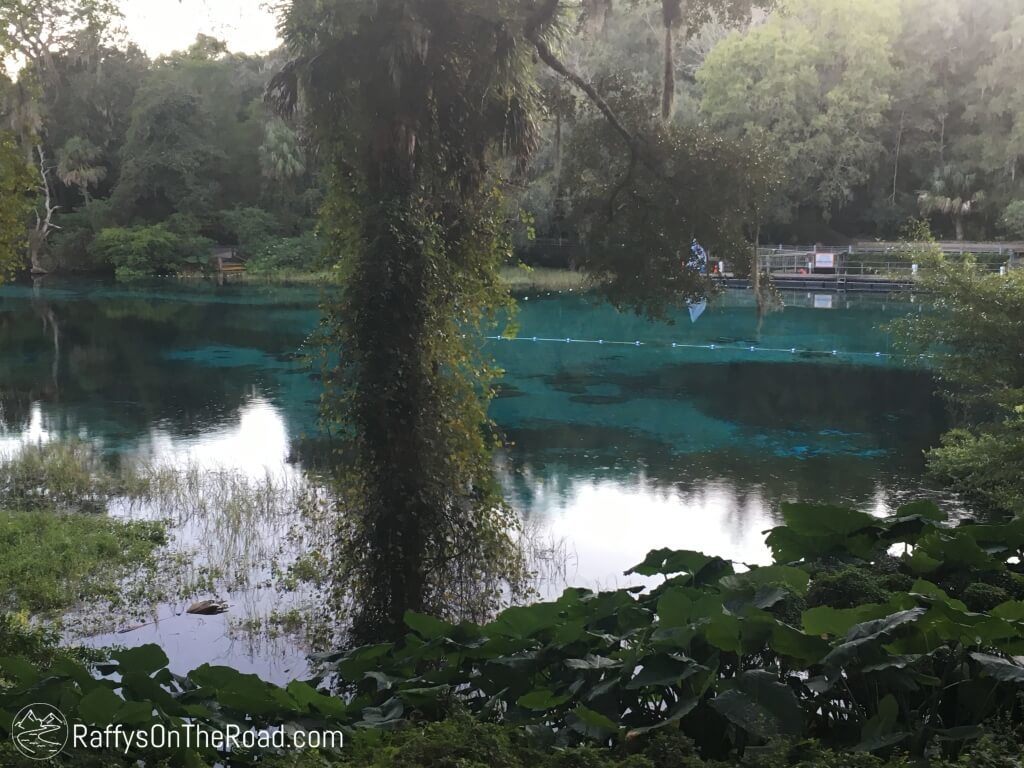
Swimming at Rainbow Springs State Park is located in the headsprings area. Here you will see some of the most stunningly clear blue water in Florida. Near the headspring visibility can be more than 225 feet, however, water clarity decreases as you move downstream (as in most rivers).
As a spring, with water constantly bubbling up from underground (to the tune of 400 to 600 gallons per day), the water is a cool (make that COLD) 72 degrees year-round!
There is a large dock boarding the swimming area, providing a great place to launch yourself into the water or just hang out and watch others jump into the clear, cold water. 🙂
Keep in mind that the swimming area depths range from 5 to 18 feet. This is well above most kiddos’ heads even in the “shallower” area, so if the kiddos are going to be doing extended swimming (rather than just jumping off the dock and swimming back to the ladder), I’d suggest life jackets (click here to check out the ones we use and recommend).
There are no tubes, rafts, or balls allowed in the swimming area, but you may use pool noodles and/or life jackets.
Snorkeling is also allowed in the swimming area, but only in the swimming area. You can snorkel from boats outside of the state park, but Florida law does require dive flags for all snorkelers.
Fishing, tubing, or diving are not allowed in the headspring area.
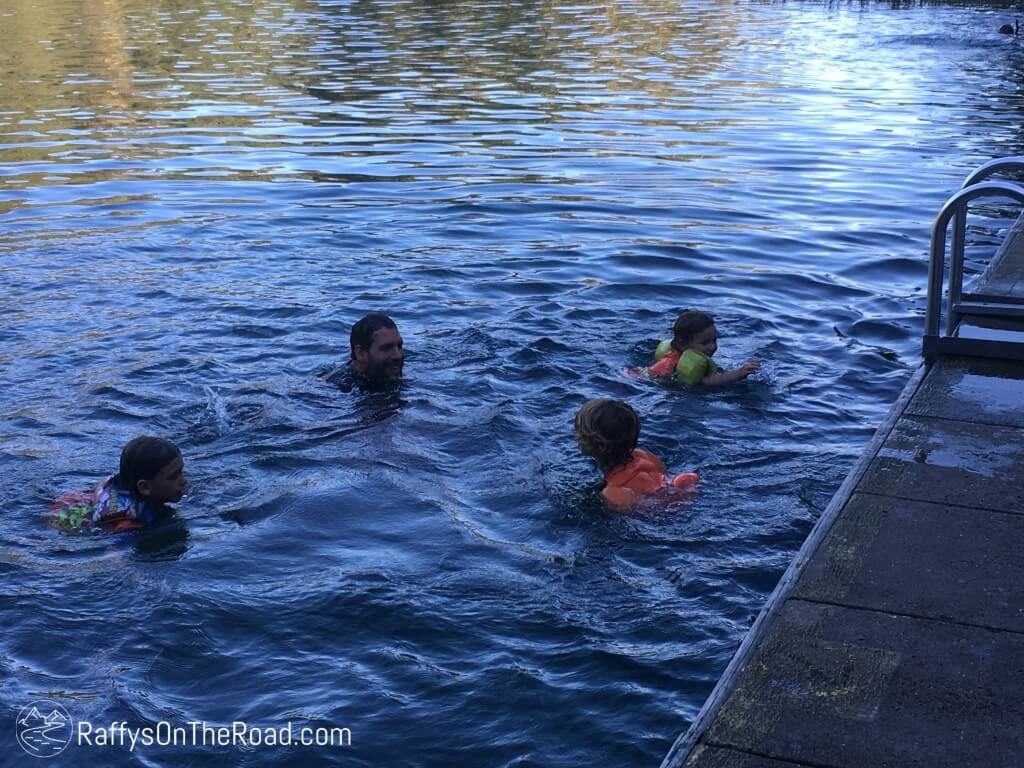
5. Main Entrance: Canoe, Kayak, and SUP Launch
From the swimming area, it is a short walk over to the boat launch. Even on this short walk, the clarity of the water is just overwhelming and gorgeous!
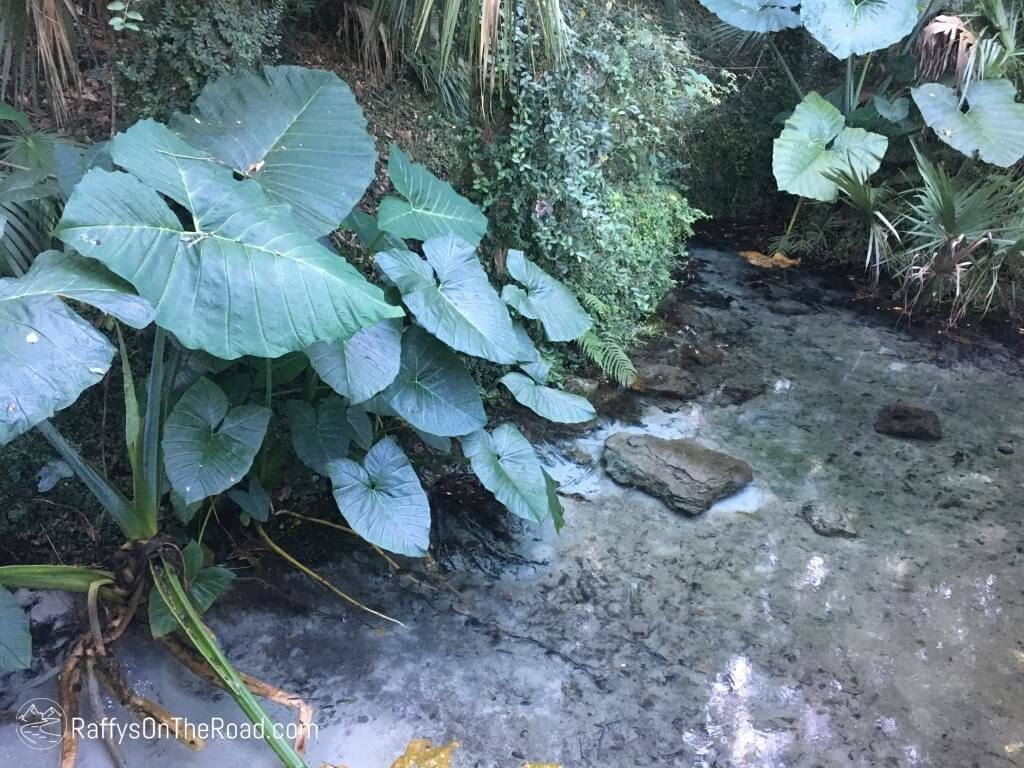
At the launch area, you can rent canoes, kayaks, or SUPs from the State Park vendor by the hour or for the day. Once you have your vessels, you can paddle around the spring and down the river and return the vessel to the rental (if you go downstream, just make sure you’re okay going just as far upstream).
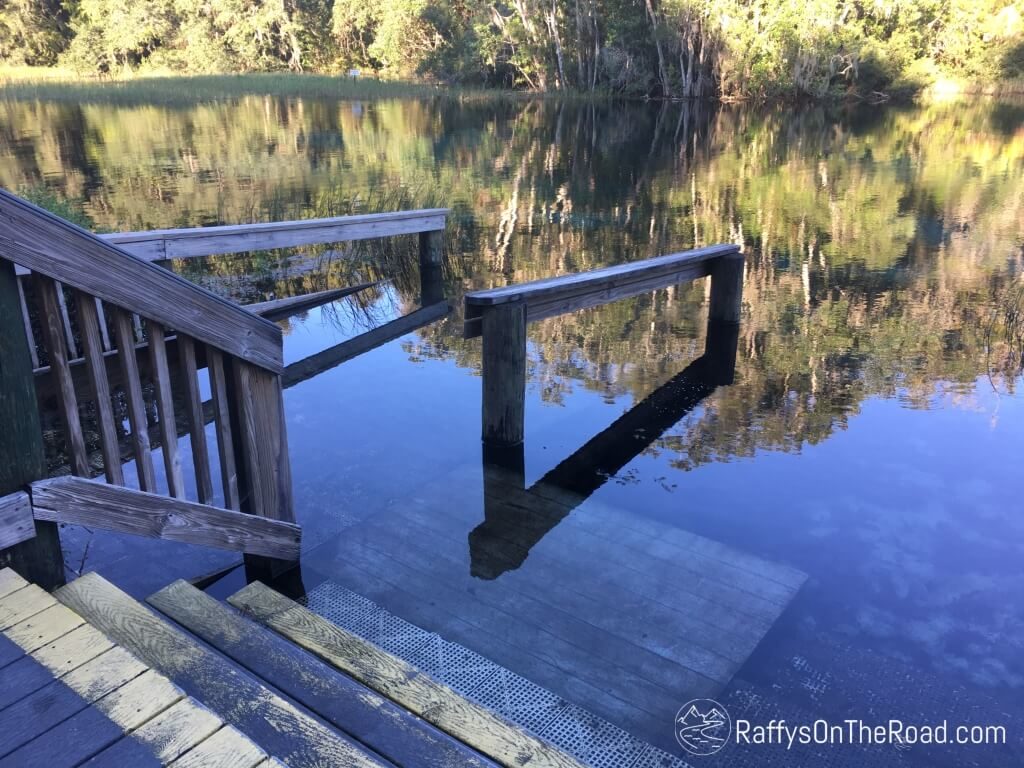
You can also launch your own vessels here, but be prepared to carry them 1800 feet from the parking lot to the launch, as there is no vehicle access to the river within the park.
If the prospect of carrying your boat 1800 feet doesn’t appeal to you (and I wouldn’t say it’s an easy walk with the hills), you can always paddle upstream (from the campground or other public launches) and dock your boat at the rental area. If you are not already camping at the State Park or don’t have a State Parks Pass, you just pay your $2 entry fee at the dock.
6. Main Entrance: Gardens, Waterfalls, and Nature Trails
When you enter the park, if instead of turning right toward the swimming area, you turn left, you get the joy of experiencing the beauty and history of Rainbow Springs from land.
The nature trails at Rainbow Springs State Park take you back in time when “Old Florida” theme park attractions ruled the tourism industry of the state. The ruins are not only fascinating but also a bit eerie – you can almost picture what it would have been like “back in the day.”
Today’s nature trails take you past three of the man-made waterfalls, all gorgeous but even more interesting when you know the history of their development (see above for my verbose recitation of the fascinating history of Rainbow Springs). Continuing past the waterfalls you walk through the remnants of the zoo and rodeo and can imagine what the place must have been like in its heyday. It was almost creepy to see the ruins but definitely cool. Reminds you that Florida was so very different back before Disney came around.
The azelas bloom in early spring which I can only imagine would be amazing in this garden area!
Keep in mind that these walking trails are not ADA compliant and the paths can be steep and uneven.
If you continue past the zoo enclosures and butterfly garden, you’ll come to the trail head to three nature trails that run through the park – the Yellow, Blue, and White trails, 1.73, .72, and 1.96 miles, respectively. These take you through the forest and past old phosphate pits.
7. Rainbow Springs Campground
When camping at Rainbow Springs, first be sure you have the correct address – W. 94th Street, Dunnellon, FL 34432. It turns out most navigation systems will take you to the main entrance, which does not connect to the campground (except by boat).
Upon arriving at the campground, you will need the gate code to enter. Either call the campground at the number listed on the sign or give them a call on your drive over so you have it ready to go. We were fortunate that the campground called us on our drive over to confirm our reservation and gave us the gate code at that time. Otherwise, we would have been one of the line of other campers at the gate without the code all trying to call the Ranger Station at the same time.
After entering the code, you proceed to the Ranger Station for a quick and easy check-in (make sure you have the license plate numbers for any vehicles). The Ranger Station also sells firewood for a donation (keep in mind the collection of firewood on state property is prohibited) and has a small gift shop where you can purchase souvenirs, supplies, or rent canoes or kayaks.
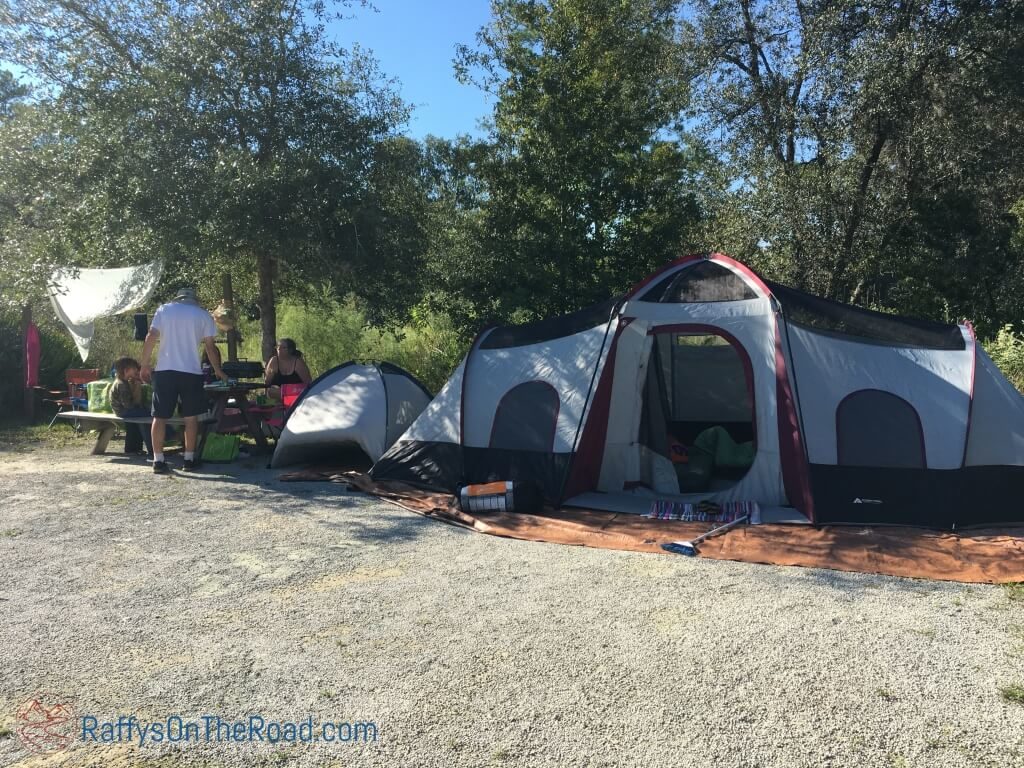
The campground has 60 sites, all with water, sewer, and electricity, as well as seven hike-in tent sites. There are three campsite loops – A, B, and C – each offering (gloriously hot) showers and laundry facilities. Campsites on Loops B and C are roomy and relatively secluded with vegetation between the sites. Loop A is less secluded and I wouldn’t necessarily recommend sites in this area.
“Campsites are large, with good privacy, but bring shade if it’s going to be hot!”
Keep in mind that while the sites in Loops B & C are secluded, most of the vegetation is saw palmetto and brush, and does not offer a lot of shade. You can see in the picture above that we set up our tents and picnic table in the only areas of shade on our large site. These gravel sites can get quite hot (we were there in October), so if you can, I’d pack a sunshade or screened tent, especially in the summer.
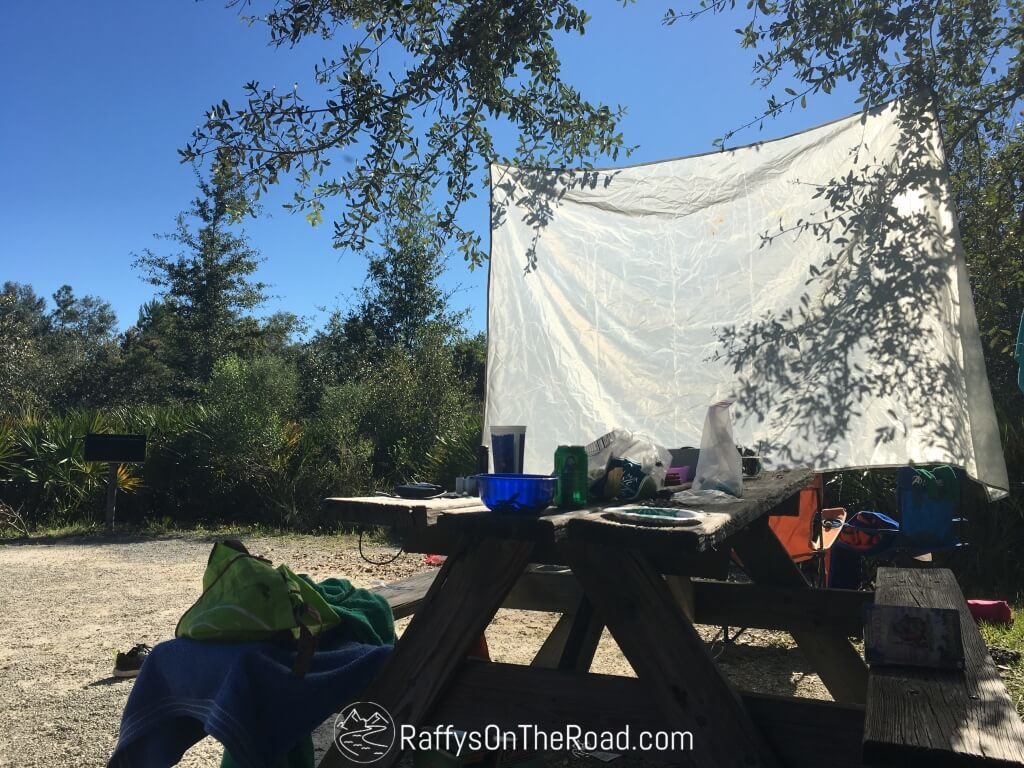
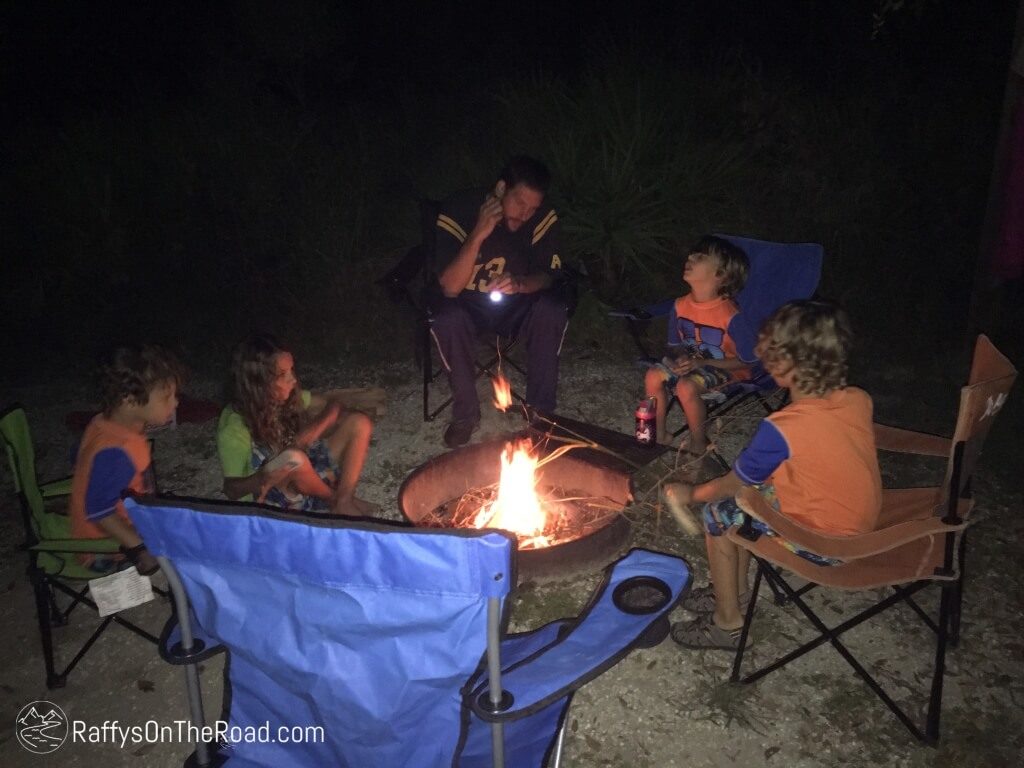
8. Canoeing/Kayaking from Rainbow Springs Campground
One of the big perks of camping at Rainbow Springs State Park is the ability to launch canoes and kayaks from their boat launch which is MUCH closer to a road than the launch at the Main Entrance.
You can either rent your vessel from the Ranger Station gift shop area or bring your own.
Also near the boat launch area, you’ll find a small swimming area in the river, along with some picnic tables.
Renting Vessels from the State Park
If you rent a vessel from the Ranger Station, you’ll simply leave your vehicle at the Ranger Station (or your campsite), walk down the tram road, past the unloading area, to the canoe rental area. You’ll get your rental and walk it just a few feet to the boat launch. From there you can either paddle upriver (to the right) to the headsprings at the Main Entrance or downriver (to the left).
If you paddle upstream to the headspring, you can just dock your vessels at the dock (no entry fee required because you’re a registered camper) and explore the swimming and hiking at Main Entrance.
When you’re done for the day you just return your vessel to the rental area and make the short trek back to your car!
Launching your own Vessels
If you’re bringing your own boats, it’s only slightly more work – but not much. You’ll drive your vehicle with the boat(s) down to the tram drop off, drop off your gear, and then drive back to the Ranger Station (or your campsite) and park your vehicle. You cannot park at the tram drop-off area.
Then you’ll just walk back to the drop-off area, gather your boat(s) and gear and walk them the short 1/10 mile trek down to the launch and off you go. To the right is upriver to the headsprings at the Main Entrance, to the left is downstream.
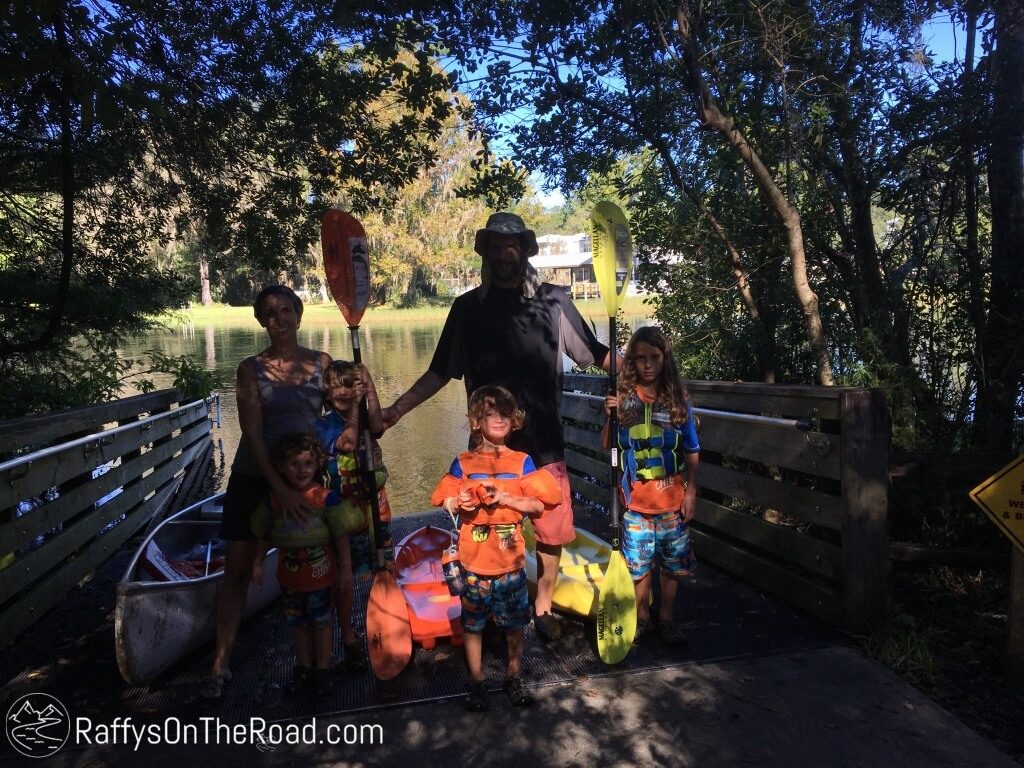
9. Canoeing/Kayaking the Rainbow River
So Rainbow Springs (the headspring) is a first magnitude spring (the 4th largest in Florida), pumping out approximately 400 -600 million gallons of beautiful spring water a day. Which means a good bit of water is coming from the spring vents and coursing down the Rainbow River. While this makes for a great tubing trip downstream, it means that paddling upstream is a bit more difficult.
While I wouldn’t say it was strenuous or especially tricky, paddling upstream also wasn’t like paddling on a lake. We had the 7-year-old and 9-year-old both in their kiddo kayaks and while the oldest made it all the way to the headspring, we ended up towing the younger behind the canoe. I will add, however, that the Park Rangers estimated it would take 1.5 hours to paddle the approximate 1.3 miles to the headspring from the campground launch, but we made it in less than an hour so that may have had something to do with the younger kiddo’s fatigue.
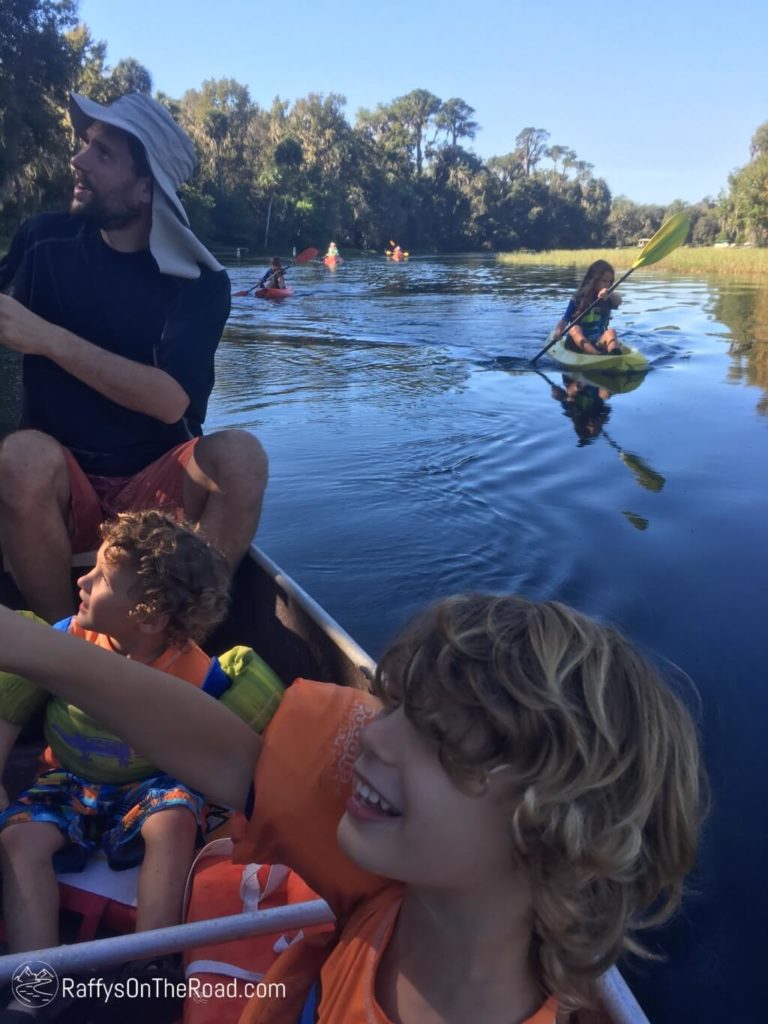
Again, I cannot adequately express the beauty of this river. A Park Ranger informed us that the depths on the river ranged from 5 to 30 feet and I kid you not when I swear you could see all the way to the bottom at depths of 30 feet. It’s not a shallow river but you can see down like it’s right below the surface.
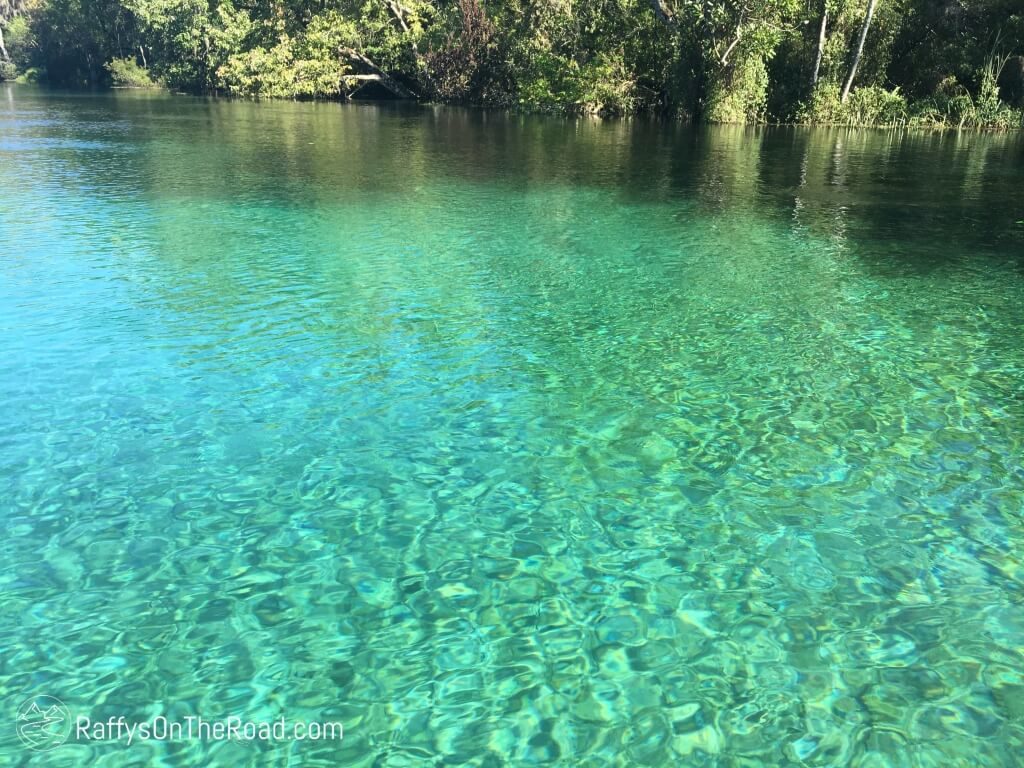
And it’s not just the clarity but the colors that are just out of this world. I could go on and on but the pictures will have to do it some justice. But you have to see it to appreciate it.
Along the paddle upstream, the State Park owns all the land on the right side of the river in its natural, pristine state. Several places look like people use them as pull-off spots or places where people have tied up rope swings, but in some locations, signs ask that you not disturb the natural habitat of the riverbanks. The left side, heading upstream, is mostly developed, with moderate-sized houses with cute yards and docks.
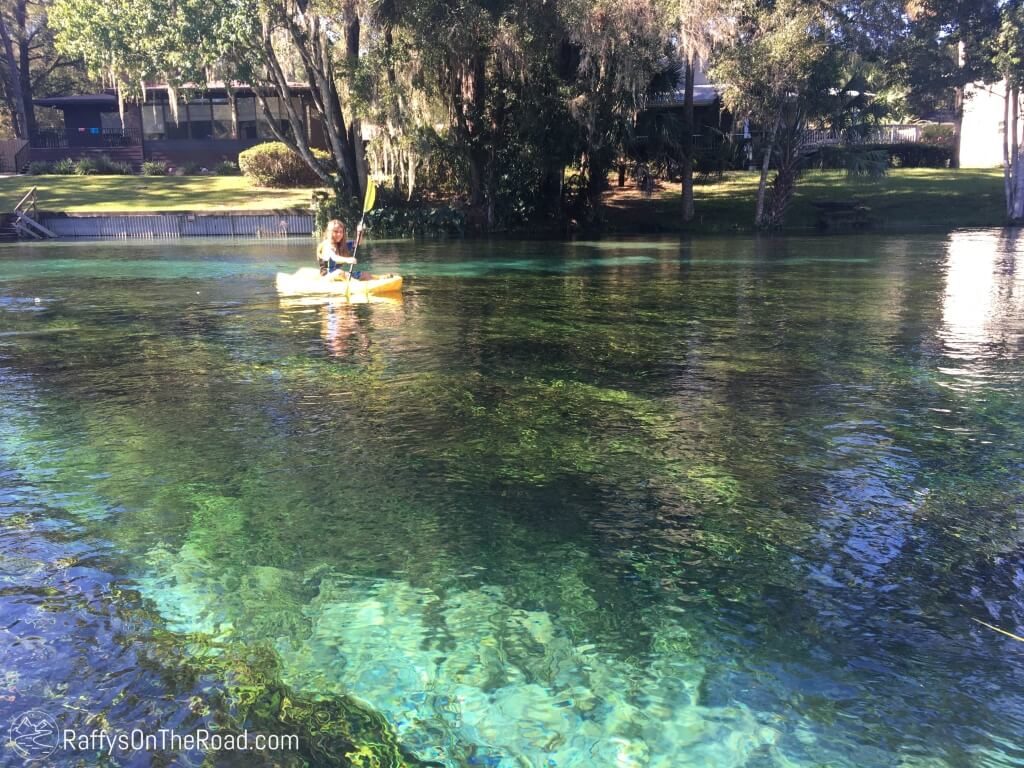
Even for a Saturday in October, well past the “busy” season, there were still a good number of vessels on the river – mostly canoes and kayaks, but also some pontoon boats and water taxis – but all were respectful of the smaller crafts and obeyed the low wake area.
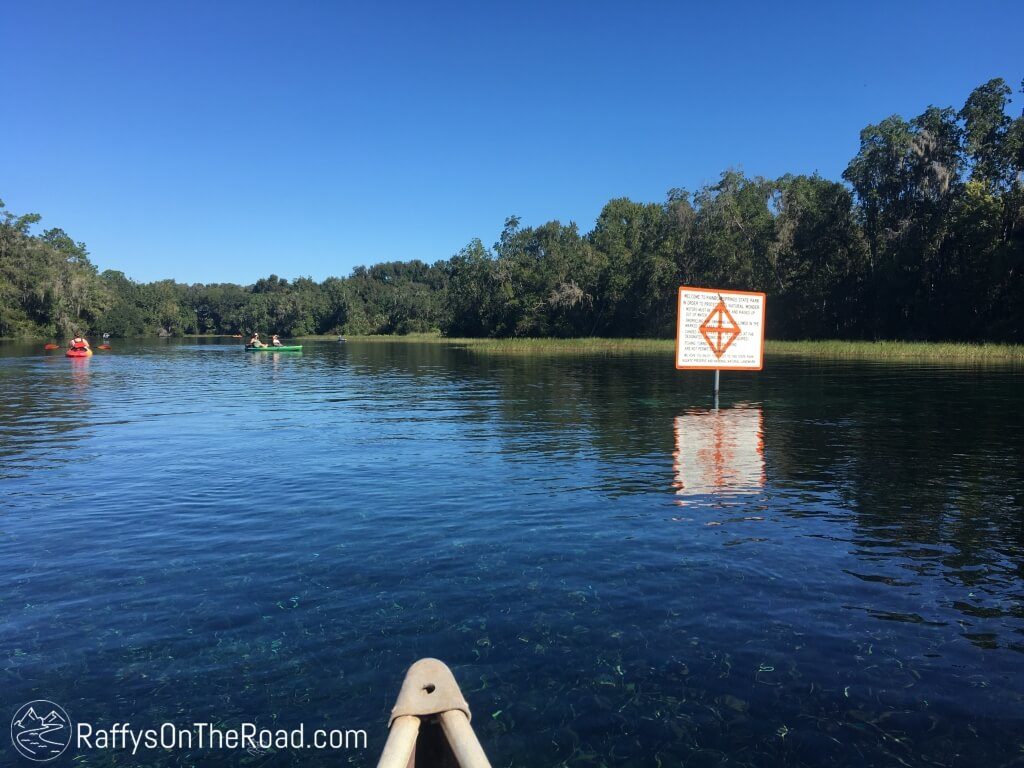
You know you’re getting close to the headspring when all the houses stop, both banks become “wild,” and you’ll see a sign for the state park with its regulations and rules.
After entering the State Park area, it’s a very short paddle upstream to the canoe launch/dock on the left.
If you are not a registered camper, you will need to pay the $2 per person entrance fee at the boat dock, but since we were campers (or state park pass holders), that wasn’t necessary.
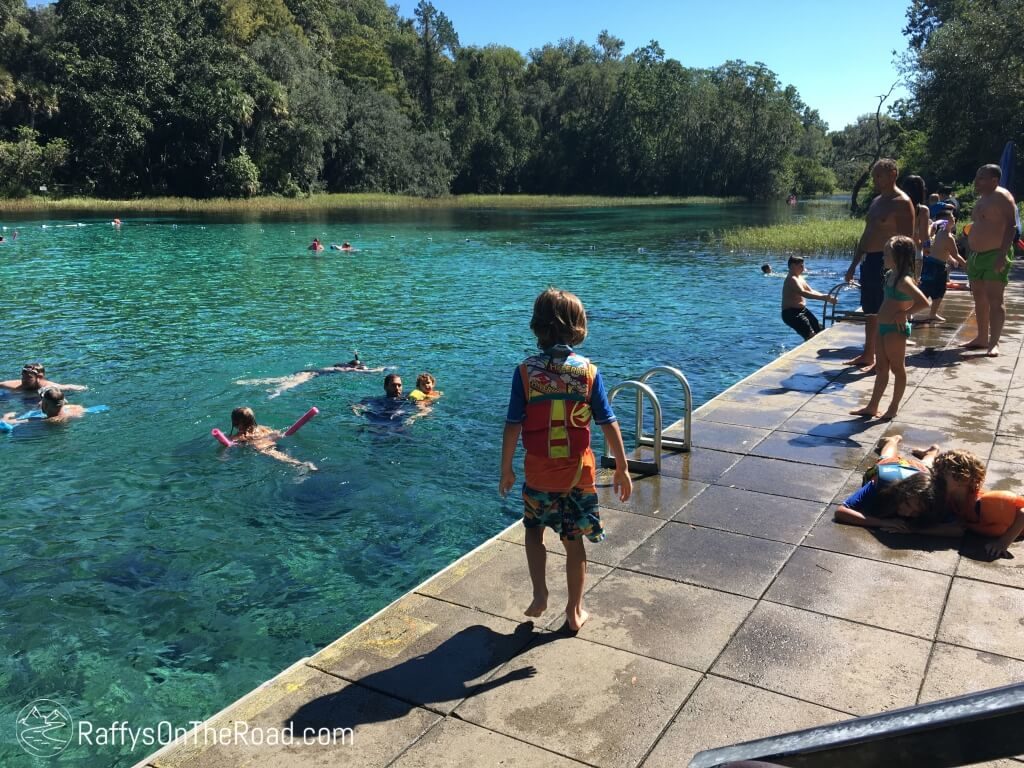
We spent our time at the headspring doing some more swimming before taking the incredibly easy, relaxing, and quick paddle back downstream to the campground boat launch area.
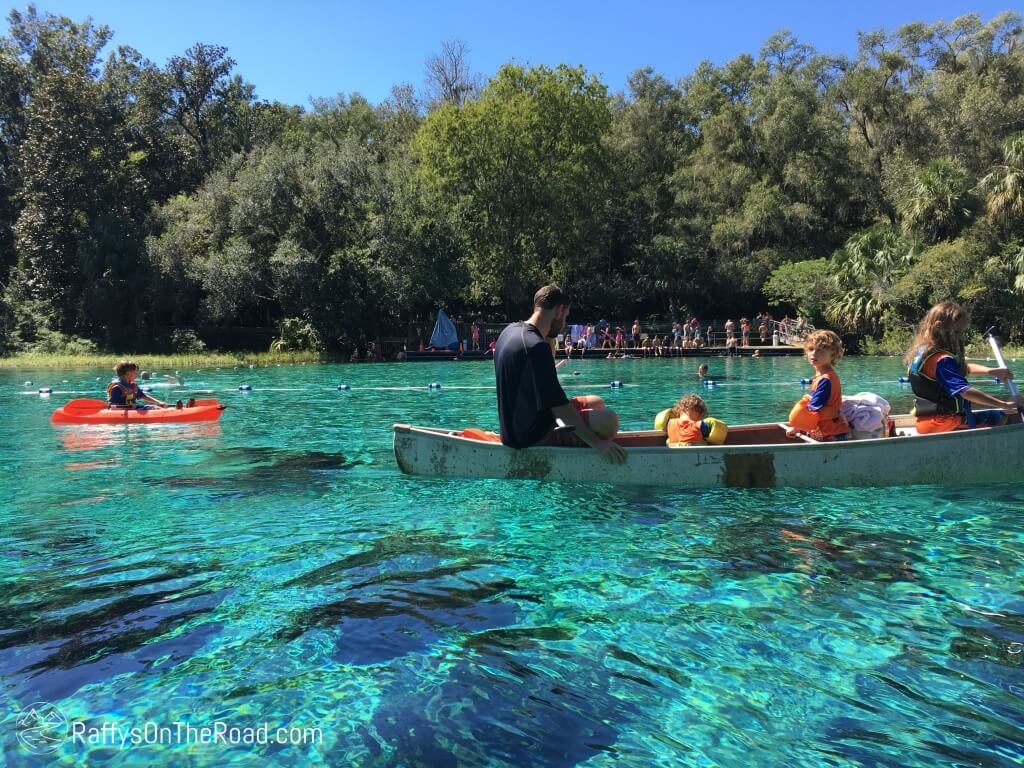
10. Tubing the Rainbow River
Tubing on the river is a bit confusing for a first-timer – so here are a few things to keep in mind when tubing the Rainbow River . . .
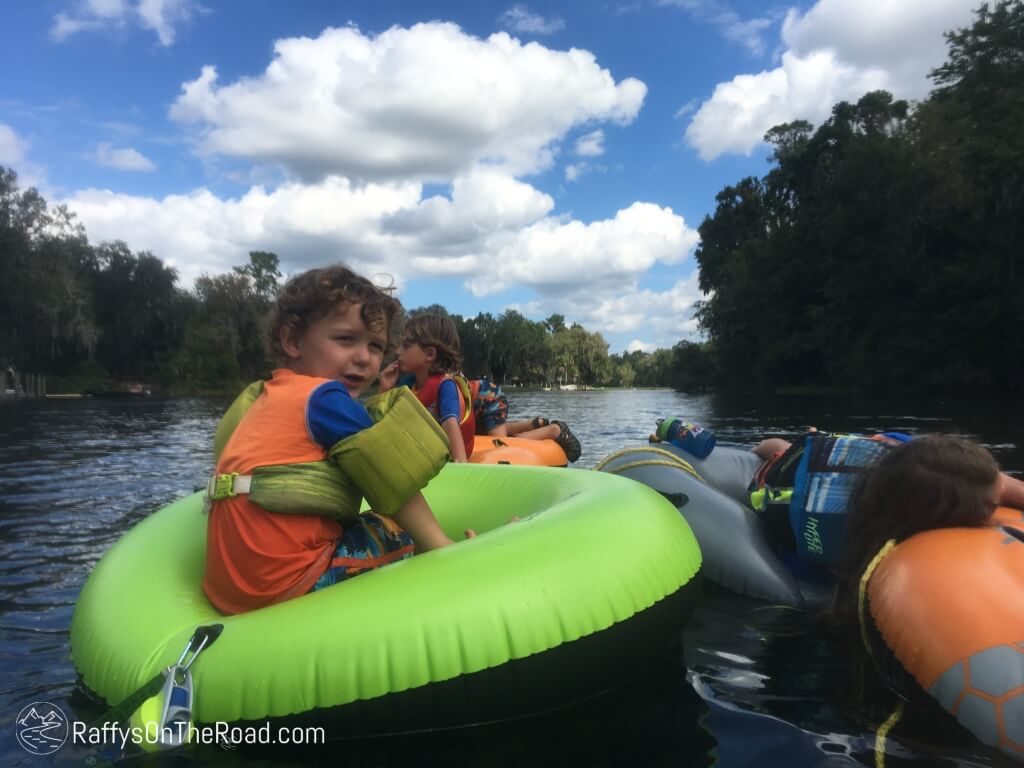
You cannot tube from the headspring.
While you can launch your own canoes or kayaks from the headspring/main entrance, or rent canoes/kayaks there, you cannot launch your tubes from the main entrance to the State Park. In fact, tubes and other inflatables are not allowed in the headsprings area.
You can rent tubes from the Tubing Entrance to the State Park.
If you would like to rent tubes from the State Park (or use their tram with your own tubes), head to the Tubing Entrance of the State Park. Here you will need to pay the $2 per person admission fee for the State Park, as well as $20 per person for tube rental and tram ride. Even if you bring your own tubes, you still have to pay the $20 for the tram.
When you are paying for your rental and tram, you will also need to sign a waiver. The State Park requires that all visitors wear a life jacket and kiddos ages 5 and 6 must have them buckled at all times.
Please be aware that the State Park DOES NOT allow kiddos under 5 years old on the river. If you have a kiddo under 5 years old that you want to tube with (like we did), you’ll have to either be a camper and launch your own tubes or use another private vendor.
Keep in mind that the Tubing Entrance is closed from November to March, but we found great tubing weather well into October without the crowds!
Once you’ve rented your tubes, paid for the tram, and gathered your life jacket, the tram will transport you to the launch at the Campground Entrance. You are dropped off at the Tram Turnaround Area and walk 1/1o of a mile to the river access, where you plop in your tubes and float downriver.
After floating for about 1.5-2 hours, you will see the State Park Tubing Exit on your left. Steer your tube to the exit and an attendant will help you exit the river.
From the exit, there is a short (but lovely) boardwalk back to a tram pick-up. You can either wait there for a tram, or make the quick walk back to the parking lot yourself. There you will find your vehicle that you parked earlier in the day! There are restrooms and showers to change clothes and your trip is done (unless you want to go again!).
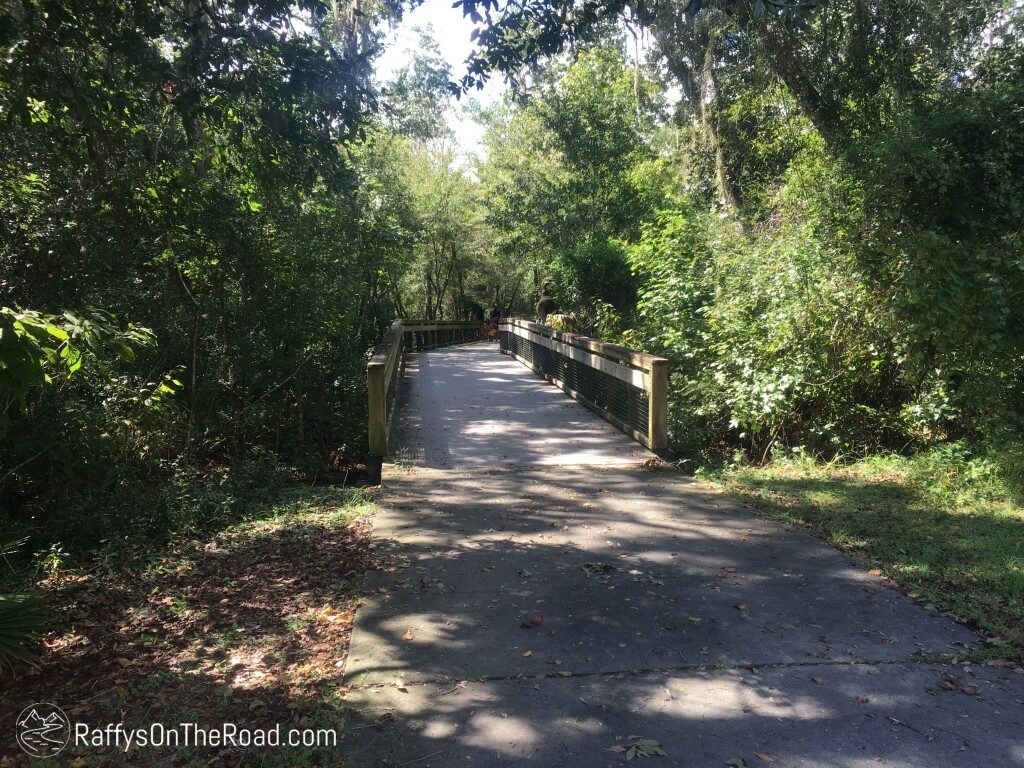
As a registered camper, you can launch your own tubes from the campground.
If you are a registered camper and bring your own tubes, you can simply walk your own tubes down to the campground launch. From there you have two choices. You can either tube all the way to Blue Run of Dunnellon Park– an approximate 4-hour float requiring that you leave a vehicle at the County Park exit – or exit at the State Park Tubing Exit.
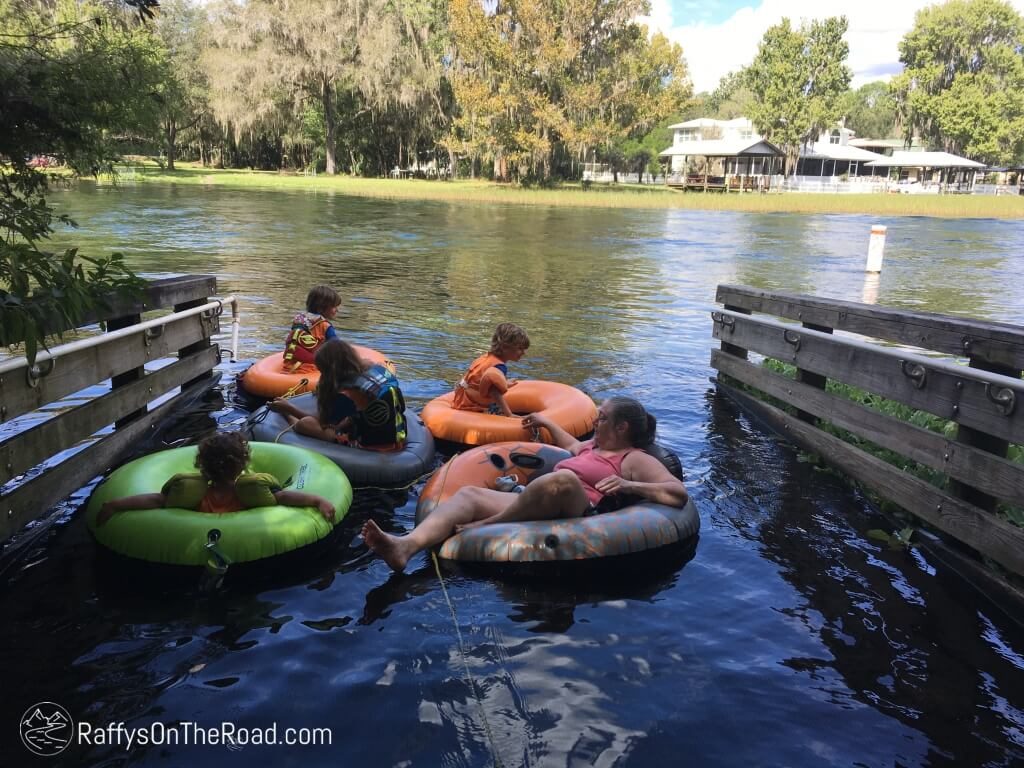
Keep in mind that if you exit at the State Park, you will need to have at least one person in your party pay the $20 tram fee to take that person back to the campground entrance to retrieve your vehicle.
You can launch from K.P. Hole, a Marion County Park.
If you don’t want to launch from the State Park, you can launch from K.P. Hole, a Marion County Park, which is virtually across the river from the State Park campground launch. You can either rent tubes from K.P. Hole (their tubing season is April 1- September 30), or a private vendor. When launching at K.P. Hole you will float approximately four hours down the river to Blue Run of Dunnellon Park.
11. Rainbow Springs Birding
If you’re into bird watching, or “birding,” Rainbow Springs is a featured stop on the Great Florida Birding and Wildlife Trail.
12. Rules of the Rainbow River.
If you’re spending time on the Rainbow River, either kayak, canoe, SUP, tubing, or motor boat, please keep in mind these rules of the river:
- Observe the No Wake/Idle Speed zone.
- It is illegal to possess disposable food or beverage containers.
- It is illegal to possess alcoholic beverages on the river.
- Fishing is not permitted on the upper mile of the river.
- SCUBA divers and snorkelers must use a divers down flag.
- Motorized vessels are not permitted in the headspring area.
13. Please help keep our springs clear and clean!
Springs are only as healthy as the area of land that contributes water to the spring (this area is called the springshed). In the case of Rainbow Springs, the springshed covers several hundred square miles and extends into three counties. Actions within the springshed affect the water flowing from the spring.
You can help keep spring water fresh and clear by:
- Conserving water.
- Disposing of grass clippings, litter, and pet waste properly.
- Never dumping anything down a storm drain.
- Discontinue fertilizer use, or use sparingly.
- Have your septic tank regularly inspected (every 2-3 years).
- Plant a buffer line between the lawn and shoreline.
I hope this information helps you make the most of your visit to Rainbow Springs State Park!
Have you been tubing or paddling on the Rainbow River? Or visited Rainbow Springs State Park to camp, swim, or take a walk back in time? Any tips or tricks you would pass on? Anything you would like to know?
As always, thanks for stopping by, and until next time, happy adventuring!
Pin This:
